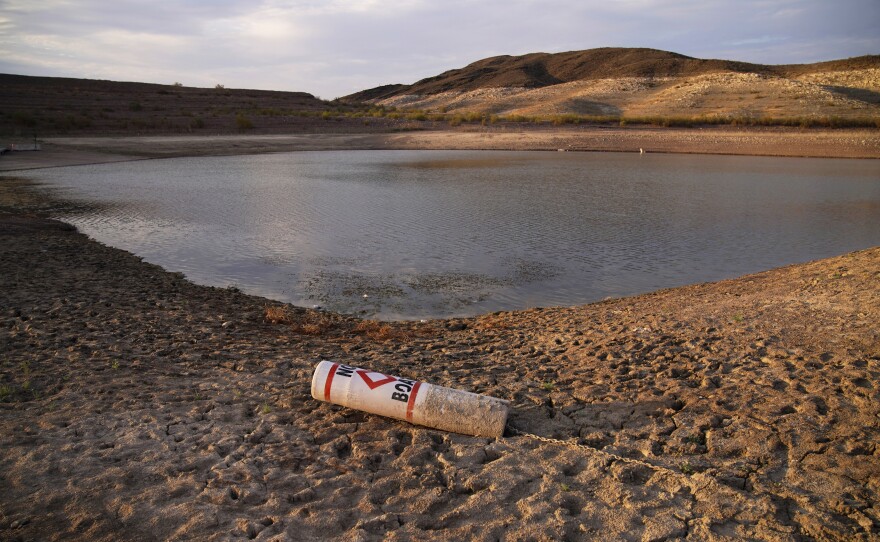Six western states that rely on water from the Colorado River have agreed on a model to dramatically cut their use, months after the federal government called for action and an initial deadline passed.
California — with the largest allocation of water from the river — is the lone holdout.
The Colorado River and its tributaries pass through seven states and into Mexico, serving 40 million people and a $5 billion-a-year agricultural industry. Some of the largest cities in the country, including Los Angeles, Phoenix, Denver and Las Vegas, two Mexican states, Native American tribes and others depend on the river that's been severely stressed by drought, demand and overuse.
States missed a mid-August deadline to heed the U.S. Bureau of Reclamation's call to propose ways to conserve 2 million to 4 million acre feet of water. They regrouped to reach consensus by the end of January to fold into a larger proposal Reclamation has in the works.
Arizona, Nevada, New Mexico, Colorado, Utah and Wyoming sent a letter Monday to Reclamation, which operates the major dams in the river system, to outline an alternative that builds on existing guidelines, deepens water cuts and factors in water that's lost through evaporation and transportation.
California did not sign on to Monday’s agreement, but released a proposal in October to cut 400,000 acre feet. An acre foot is enough water to supply two to three U.S. households for a year.
Tina Shields, water manager for California's Imperial Irrigation District — the single-largest user of Colorado River water — declined to comment Monday on the basin-wide discussions. But she said any multi-state agreement must be legally defensible.
“Frankly, that’s what the priority system was set up for ... to make long-term planning decisions," Shields said. “We have done so in California and looking to solve a larger Colorado River drought by pointing at those with senior water rights isn’t fair.”
Nothing will happen immediately with the consensus reached among the six states. However, not reaching a consensus carried the risk of having the federal government alone determine how to eventually impose cuts.
By not signing on, California doesn't avoid that risk.
The debates over how to cut water use by roughly one-third have been contentious. The Upper Basin states of Wyoming, New Mexico, Colorado and Utah have said the Lower Basin states — Arizona, California and Nevada — must do the heavy lifting. That conversation in the Lower Basin has centered on what's legal and what's fair.
Reclamation will consider the six states’ agreement as part of a larger proposal to revise how it operates Glen Canyon and Hoover Dams — behemoth power producers on the Colorado River. The reservoirs behind the dams — Lake Powell and Lake Mead — have reached historic lows amid a more than two-decade-long drought and climate change.
Reclamation plans to put out a draft of that proposal by early March, with a goal of finalizing it by mid-August when the agency typically announces the amount of water available for the following year. Reclamation has said it will do what's needed to ensure the dams can continue producing hydropower and deliver water.
Those annual August announcements have led to mandatory cuts for the past two years for Arizona, Nevada and Mexico in the river’s Lower Basin. California has so far been spared from cuts because it has some of the oldest and most secure water rights, particularly in the Imperial Valley where much of the country's winter vegetables are grown, along with the Yuma, Arizona, region.
Without California's participation, the six states' proposal can only go so far to meet they hydrological realities of the river. Water managers in the Lower Basin say the scale of conservation Reclamation is seeking cannot be met without California, tribes and farmers who draw directly from the Colorado River.
Also unclear is how much Mexico eventually will contribute to the savings. In the best water years, Mexico receives its full allocation of 1.5 million acre feet under a treaty reached with the U.S. in 1944.








